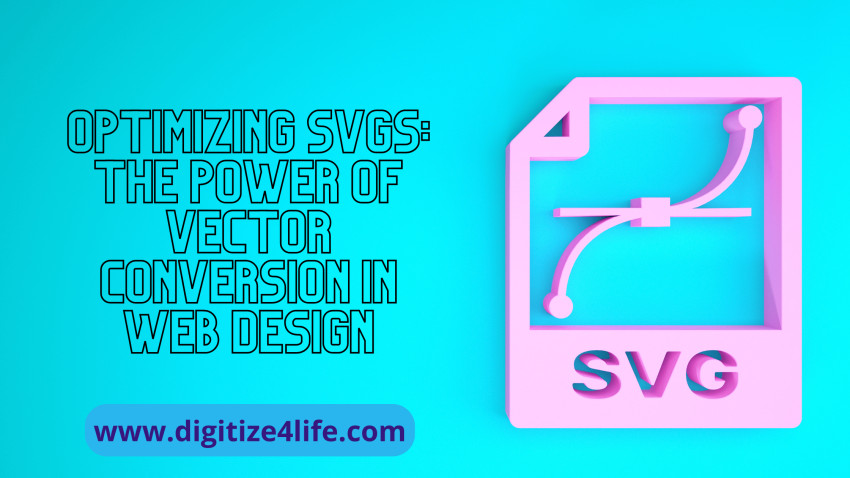
Title of Blog: Enhancing SVGs: Unlocking the Potential of Vector Conversion in Contemporary Web Design
Content of the Blog:
Vector conversion optimization of SVGs (Scalable Vector Graphics) is a potent method that is becoming more and more popular. We'll explore the nuances of SVG optimization and the revolutionary effects of vector conversion on contemporary web design in this extensive book.
Overview
Web designers are always looking for ways to improve the performance and user experience of their websites. The importance of optimizing SVGs in this pursuit cannot be emphasized. SVGs, or scalable vector graphics, are a lightweight and resolution-independent way to display images on the web.
SVGs: What are they?
SVGs are vector image formats with an XML foundation that offer raster images a scalable and superior substitute. SVGs are perfect for responsive web design because they can be resized without sacrificing quality, unlike standard image formats.
SVG Optimization's Power
Performance Boost: SVGs help websites load more quickly and have lower latency overall. Smaller file sizes from optimized SVGs provide a flawless user experience.
Responsive web design is a must in light of the increasing popularity of different devices. Because SVGs are vector-based, they scale to fit various screen sizes without losing quality.
Cross-Browser Compatibility: As SVGs work with all major browsers, consumers may be guaranteed a consistent visual experience. For contemporary web designers, SVGs are the favored option due to their cross-browser compatibility.
Methods for SVG Optimization Magnification: To minimize the size of your SVG files, eliminate extraneous code and whitespace. The optimization procedure is made simpler by the automation of this process by a plethora of web tools and plugins.
Path Simplification: Simplify intricate routes in your SVGs to save file space without sacrificing visual appeal. Both physical labor and optimization tools can be used to do this.
Color Optimization: Reduce superfluous color information to maximize the use of color in your SVGs. Reduce file sizes and improve visual appeal by using a limited color palette.
Vector Conversion's Function
Converting raster images to vector format is known as vector conversion. This method works especially well for smoothly integrating raster-based visuals into a vector-based design environment.
Advantages of Converting Vectors:
Scalability: Any screen can display vector images sharply and clearly since they may be enlarged without sacrificing quality.
Editing Flexibility: Designers can make adjustments to vector images without sacrificing quality because they are simple to edit.
File Size Reduction: One of the main benefits of vectorizing raster images is that the files become smaller, which helps with overall website optimization.
Resources for Converting Vectors:
Using Online Converters Like Vector Magic to Implement SVG Optimization and Vector Conversion Into Your Workflow: Adobe Illustrator, Inks cape
From the beginning, include vector conversion and SVG optimization in your design process.
Select the appropriate plugins and tools so that they work well with your design programmer.
Frequent Updates and Audits:
Check your website often for out-of-date or poorly optimized SVGs.
Keep abreast with the most recent methods and resources for SVG optimization.
In summary
In conclusion, the creation of aesthetically attractive, responsive, and high-performing websites begins with optimizing SVGs and utilizing the power of vector conversion. You may improve user experience and remain ahead of the always changing digital scene by implementing these strategies into your web design workflow.




